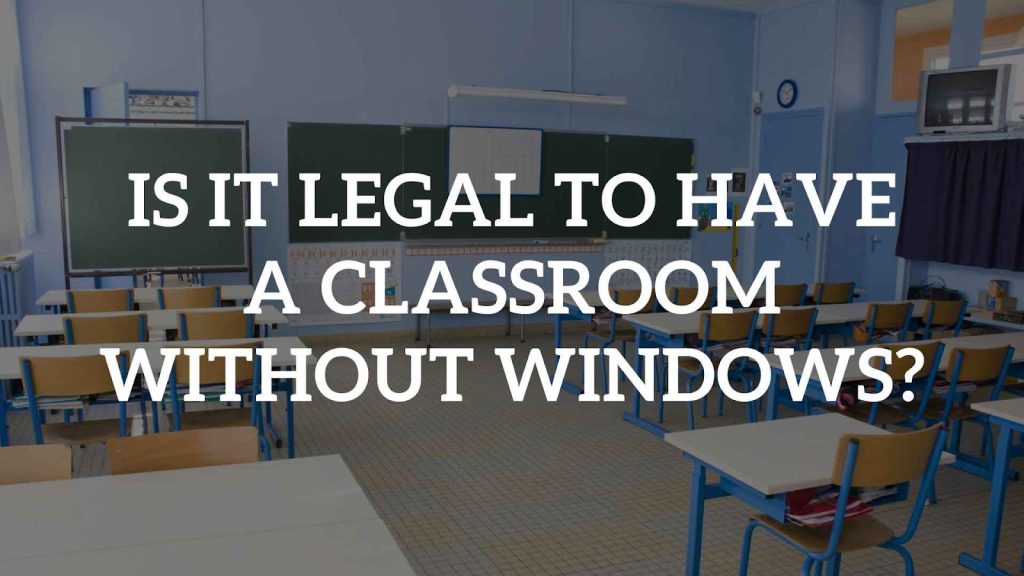Is it legal to have a classroom without windows? There is no specific law or building code that explicitly requires a classroom to have windows. However, the absence of natural light can have various implications.
In some cases, classrooms without windows may be legal, as long as there is an exit door. However, some argue that windowless rooms for students should be illegal, as they can harm students’ mental health.
In this article, we will explore the legal requirements for classroom windows, the impact of classrooms without windows, and alternatives to classroom windows.
Understanding the Building Code Requirements for Classrooms
While the presence of windows in classrooms is not always explicitly required, various building codes and regulations govern this area.
National Building Code
The National Building Code does not generally require the inclusion of windows in classrooms. However, it provides guidelines for the construction and design of educational spaces. It emphasizes aspects such as safety, ventilation, and overall environmental quality.
State and Local Building Code
State and local building codes may have specific requirements regarding the presence of windows in classrooms.
For example, in Washington State, the Washington Administrative Code (WAC) specifies that no student shall occupy a classroom without windows for more than 50 percent of the school day.
Similarly, in West Virginia, there are laws related to numbering windows and exterior walls to aid emergency responders.
International Building Code
The International Building Code also addresses the design and construction of educational facilities. It may not explicitly require windows in every classroom. However, it includes provisions for safety, environmental quality, and emergency exit.
Legal Requirements for Classroom Windows
The legal requirements for classroom windows include various regulations related to fire safety, health and safety, and accessibility.
The specific requirements vary by location. Here are some general provisions and considerations:
Fire Safety Regulations
Fire safety regulations often dictate the size, design, and accessibility of windows in educational facilities.
For instance, rescue windows are typically required to have a clear opening of six square feet, with a minimum dimension of 24 inches in width or height.
Additionally, unobstructed exit routes are also required. So, you can safely exit the classroom in the event of a fire or other emergencies.
Health and Safety Regulations
Health and safety regulations aim to ensure your well-being within educational spaces. Specific health and safety regulations may not generally require the inclusion of windows in every classroom.
However, the overall environmental quality, ventilation, and access to natural light are important factors considered in the design of classrooms.
Accessibility Regulations
Accessibility regulations govern the design and usability of classrooms for students with disabilities. Again, the presence of windows is not a direct focus of accessibility requirements.
However, the overall layout and features of classrooms should adhere to accessibility standards to ensure equal access and participation for all students and staff.
Impact of Classroom without Windows
Now, let’s explore the impacts of a classroom without windows.
Psychological Impact on Students
The absence of windows in classrooms can have a negative psychological impact on students. For instance, the lack of natural light and connection to the outside environment may contribute to feelings of confinement and affect your overall mental well-being.
Impact on Concentration and Learning
The presence of natural light and views of the outdoors has been linked to improved concentration and learning. Your capacity to pay attention can increase significantly when you have a view of green space outside your classroom window.
Therefore, the absence of windows may potentially hinder your ability to focus and engage effectively in the learning process.
Impact on Mood and Behavior
The lack of natural light and outdoor views may contribute to feelings of discomfort and dissatisfaction. This can influence your behavior and overall classroom atmosphere. And not as a student, but as an instructor too.
Impact on Health and Well-being
Your overall health and well-being in windowless classrooms is a significant concern. While specific health impacts may vary, the absence of natural light and outdoor views could potentially affect your well-being and contribute to feelings of discomfort and dissatisfaction.
Impact on Comfort and Satisfaction
The absence of windows in classrooms may impact your overall comfort and satisfaction. Some teachers also express concerns about the lack of natural light and its influence on the classroom environment.
Alternatives to Classroom Windows
In the absence of natural light from windows, several alternatives can help create a conducive learning environment.
Use of Skylights
Skylights are a popular alternative to windows, as they provide natural light and ventilation. Skylights can be installed in various shapes and sizes, and they can be placed strategically to maximize the amount of natural light that enters the classroom.
Skylights can also be equipped with shades or blinds to control the amount of light and glare.
Use of Artificial Lighting
Artificial lighting can be used to supplement natural light or to provide light in classrooms without windows. However, it is essential to choose the right type of artificial lighting to avoid glare and eye strain.
LED lighting is a popular choice for classrooms, as it is energy-efficient and produces minimal heat.
Use of Indoor Plants
Indoor plants can help create a more comfortable and inviting learning environment. Plants can also help improve air quality by absorbing carbon dioxide and releasing oxygen.
Moreover, the presence of indoor plants can have a positive impact on your mood and concentration.
Conclusion
So, is it legal to have a classroom without windows? Well, it is not illegal. However, the absence of windows in classrooms can have significant impacts on your psychological well-being, concentration, mood, behavior, physical health, and overall comfort and satisfaction.
Moreover, educational institutions should adhere to relevant building codes and regulations to ensure the safety and well-being of students and staff.
Michael C Vang is a passionate blogger. He has been blogging since 2013 on a variety of topics. He is committed to creating informative and engaging content that helps readers learn more about everything.



